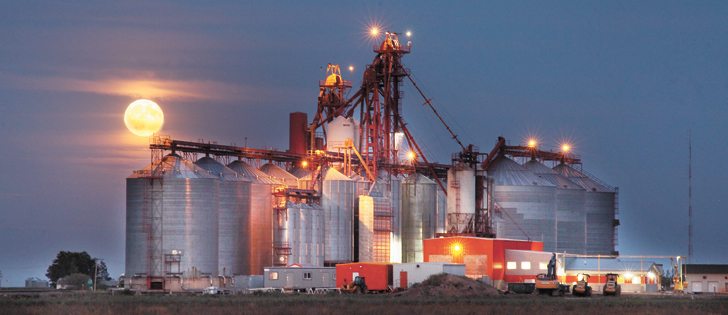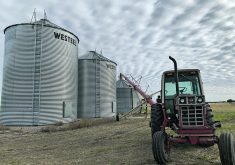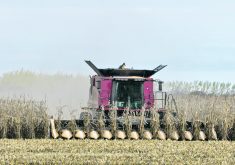Storm clouds have been a common sight above the prairie landscape this year, but there are no clouds on the horizon when it comes to grain movement, says the top executive with the Western Grain Elevator Association.
So far, capacity at country elevators is good, space at west coast export terminals is within an acceptable range and railways have signalled that they are well-positioned to move what’s shaping up to be a near-record prairie harvest.
“Until we get signals that cause us concern … we’re feeling pretty good going into this crop year,” said WGEA executive director Wade Sobkowich.
Read Also

Farming Smarter receives financial boost from Alberta government for potato research
Farming Smarter near Lethbridge got a boost to its research equipment, thanks to the Alberta government’s increase in funding for research associations.
“Hopefully we get some good movement and we are able to take advantage of some blending opportunities to sell an average to good quality crop.”
The prairie harvest is still in its early stages, but industry observers are expecting a bigger-than-average crop with average quality.
Earlier this year, WGEA members, including Cargill, Louis Dreyfus, Parrish & Heimbecker, Paterson, Richardson and Viterra, projected a total prairie harvest in the range of 63 to 74 million tonnes.
Sobkowich said those estimates have not changed much over the past two months.
“We’re still sticking with the 70 million tonne Western Canada (harvest), give or take five million tonnes,” he said.
“Capacity-wise, we’re in a comfortable range and we’re looking at a carry-in of about eight million tonnes, so we’ll have to deal with that.”
As always, the size of old crop carry-in is a topic of some debate.
Prairie farmers are anticipating an oversized harvest this year, so on-farm storage space will be at a premium.
Some growers have suggested that estimates of carry-in stocks are inflated, putting downward pressure on markets.
According to Canada’s Grain Monitoring Program, West Coast terminal stocks as of Aug. 14 were a hair under 478,000 tonnes, compared to 628,000 tonnes a year ago.
Country elevator stocks in the four western provinces are also down, according to monitoring program data released last week.
Total volumes in-store at western primary elevators were pegged at 1.66 million tonnes in mid-August, down from 2.34 million tonnes a year ago.
Sobkowich said some old-crop supplies are likely being held back while stakeholders assess the quality of this year’s crop.
“If there’s good quality (carry-in) that can be used to blend up for value, then they’ll probably take advantage of that opportunity by holding onto last year’s stocks for a little bit.
“There’s been some moisture late in the season and perhaps too much of it, so that’s created the (potential for downgrades), but again, it’s a little too early to tell,” Sobkowhich said.
“As harvest progresses, we’ll get a better idea of what crop quality looks like.”
Sobkowich said Canadian grain handling companies are not anticipating problems filling contracts and meeting foreign customers’ quality specifications.
“The world buys average quality wheat, by and large, and the … grain handling system always finds a way to meet customers’ specifications,” he said.
“Some years are more challenging than others, but the jury’s still out on how challenging this year is going to be.”
Sobkowich acknowledged that wheat protein across much of Western Canada will be affected by abundant rainfall and larger-than-average yields.
Protein premiums might be used to source high-quality grain into the system.
“We are looking at lower protein levels this year, primarily because of the larger crop size,” he said.
“You never know how prices are going to be set to send the right signals to farmers.”
Concerns over barley quality are also increasing as the malting industry digests news of significant chitting in key production areas.


















